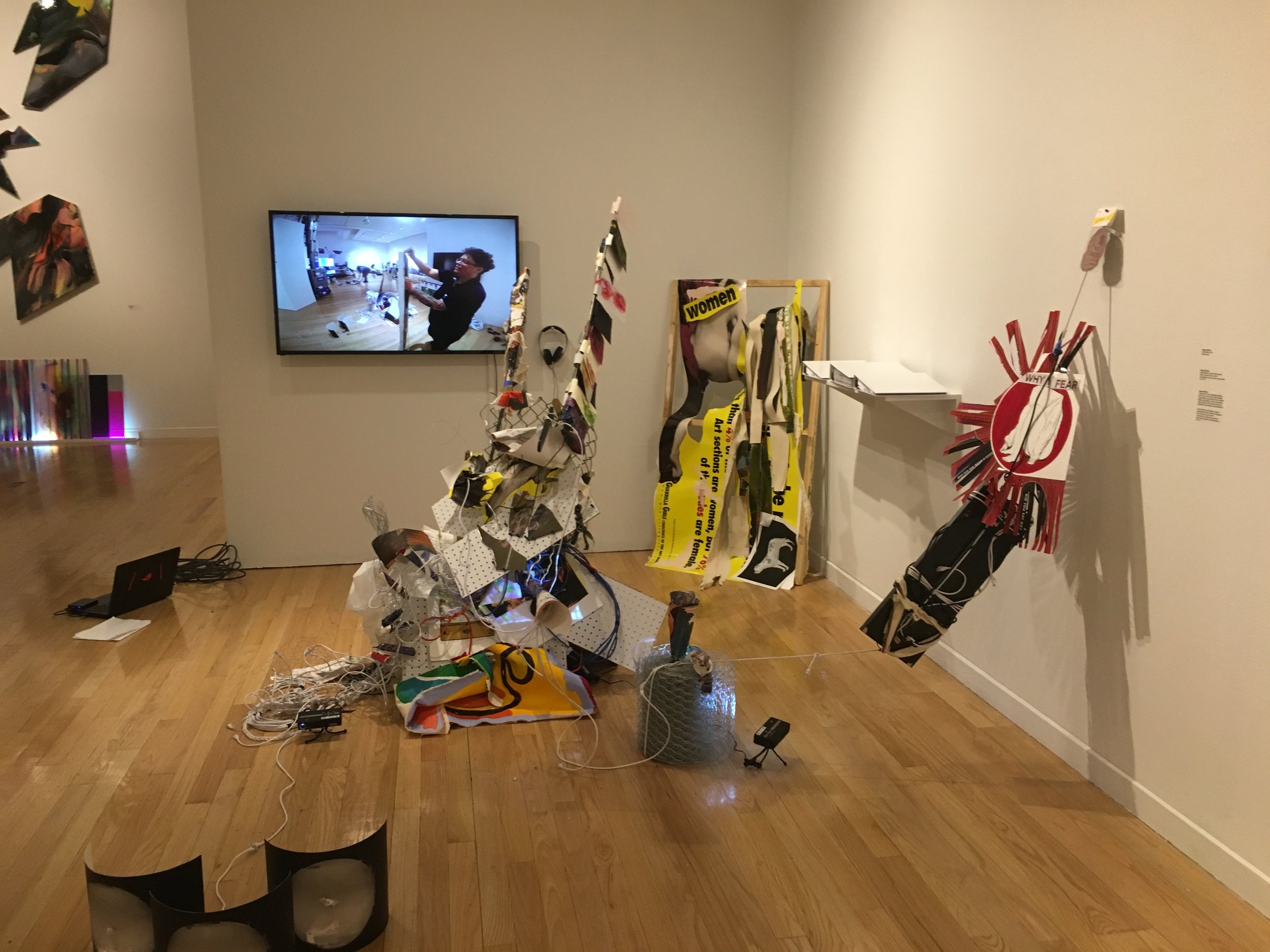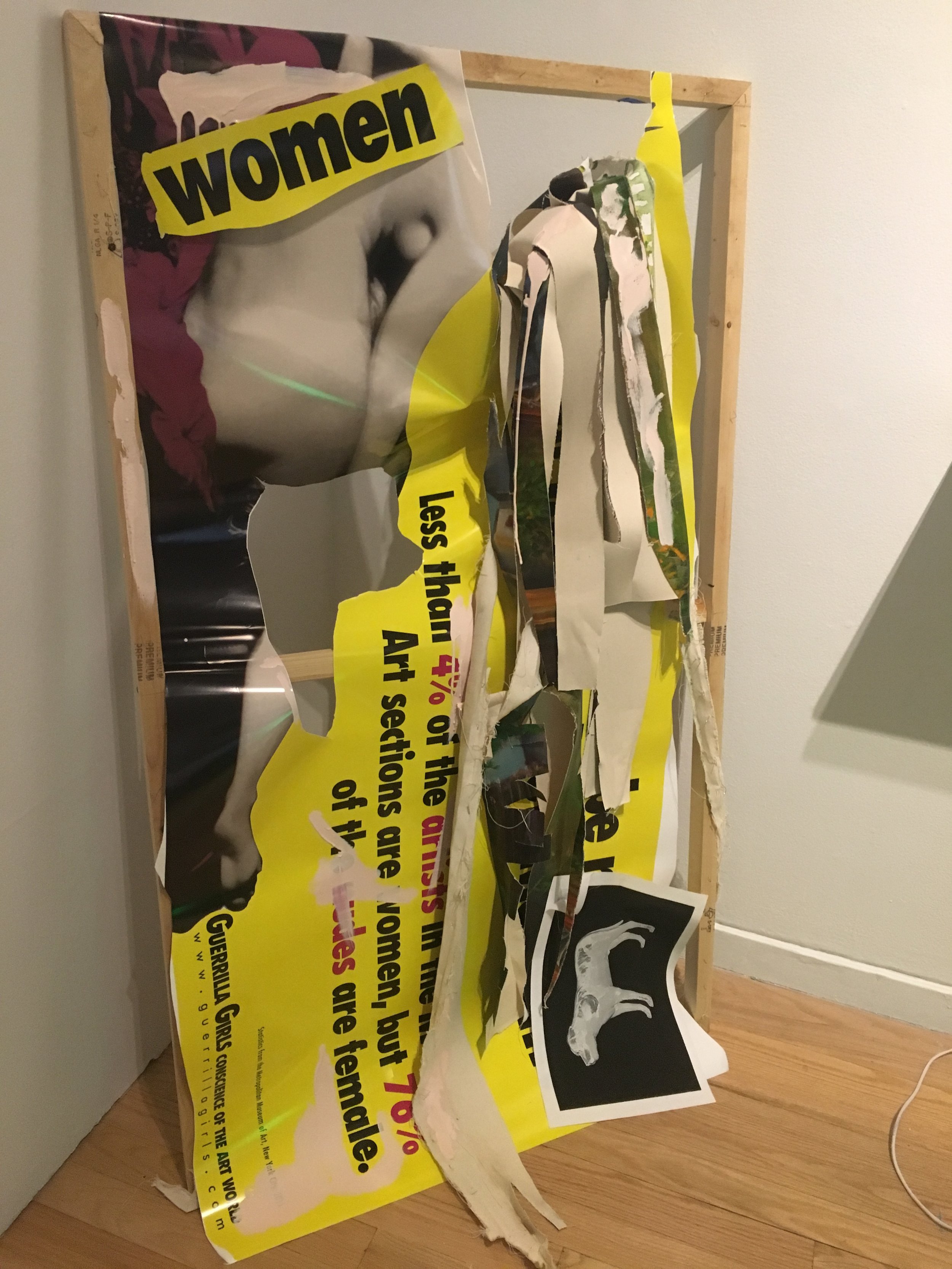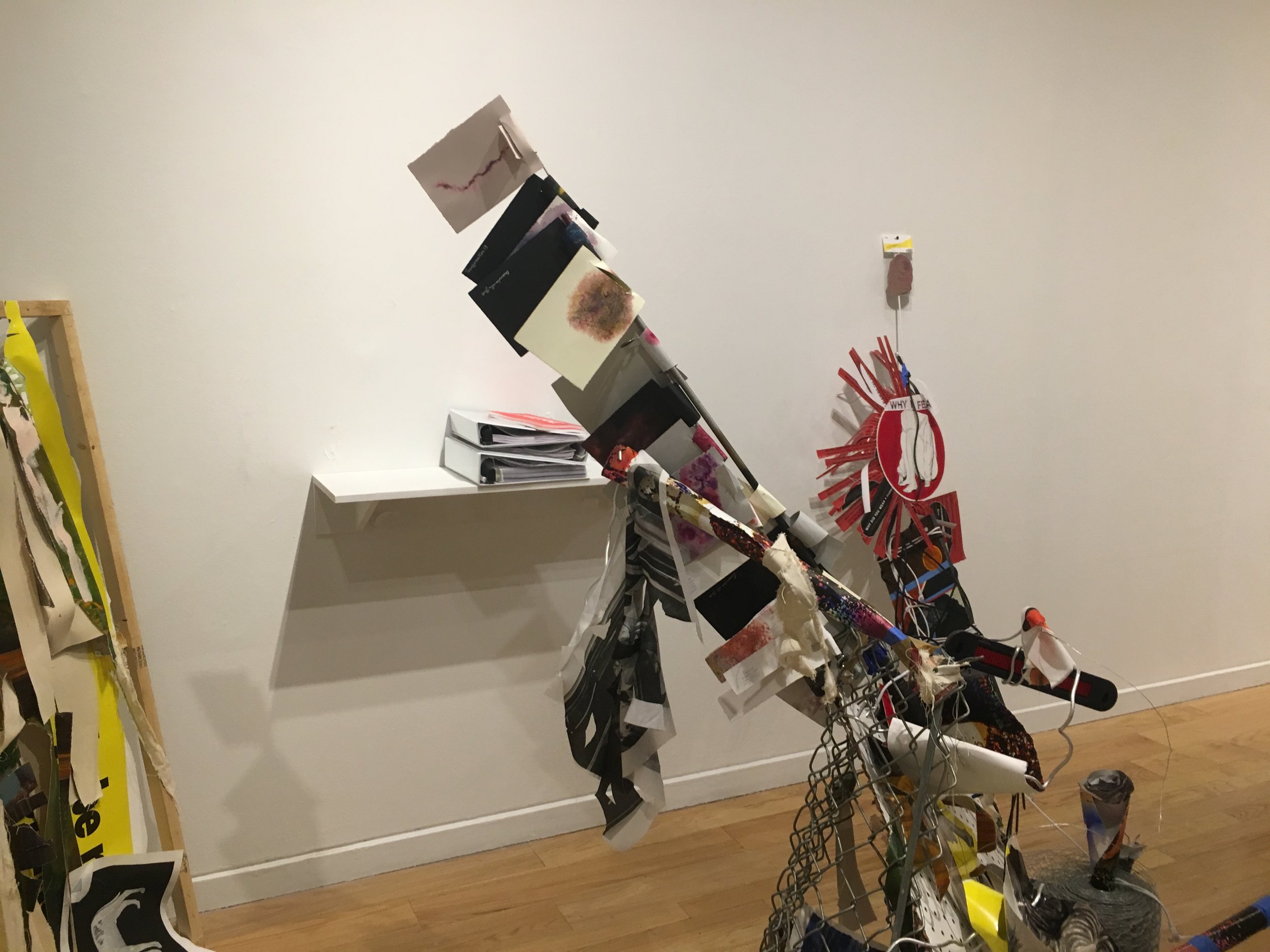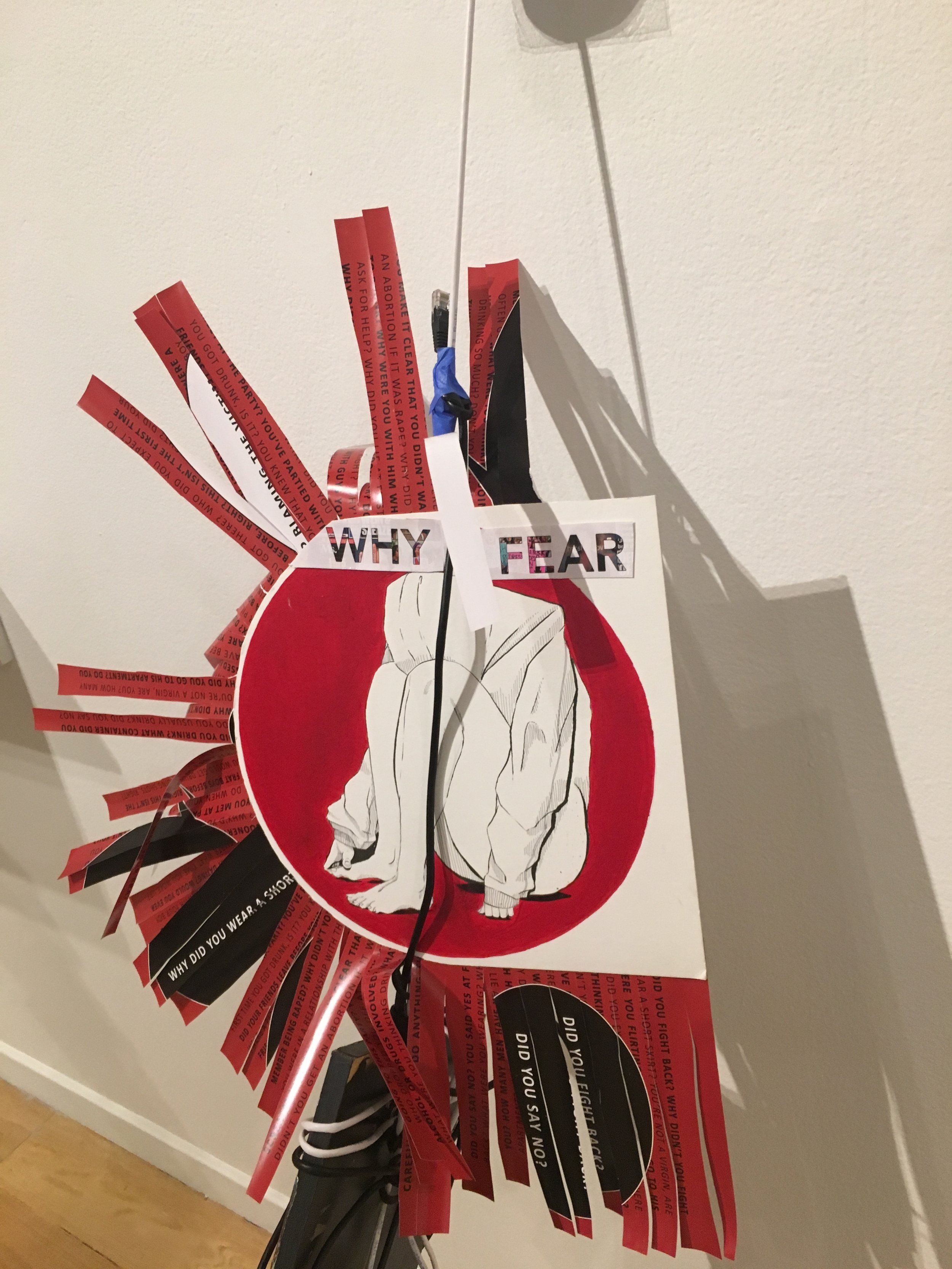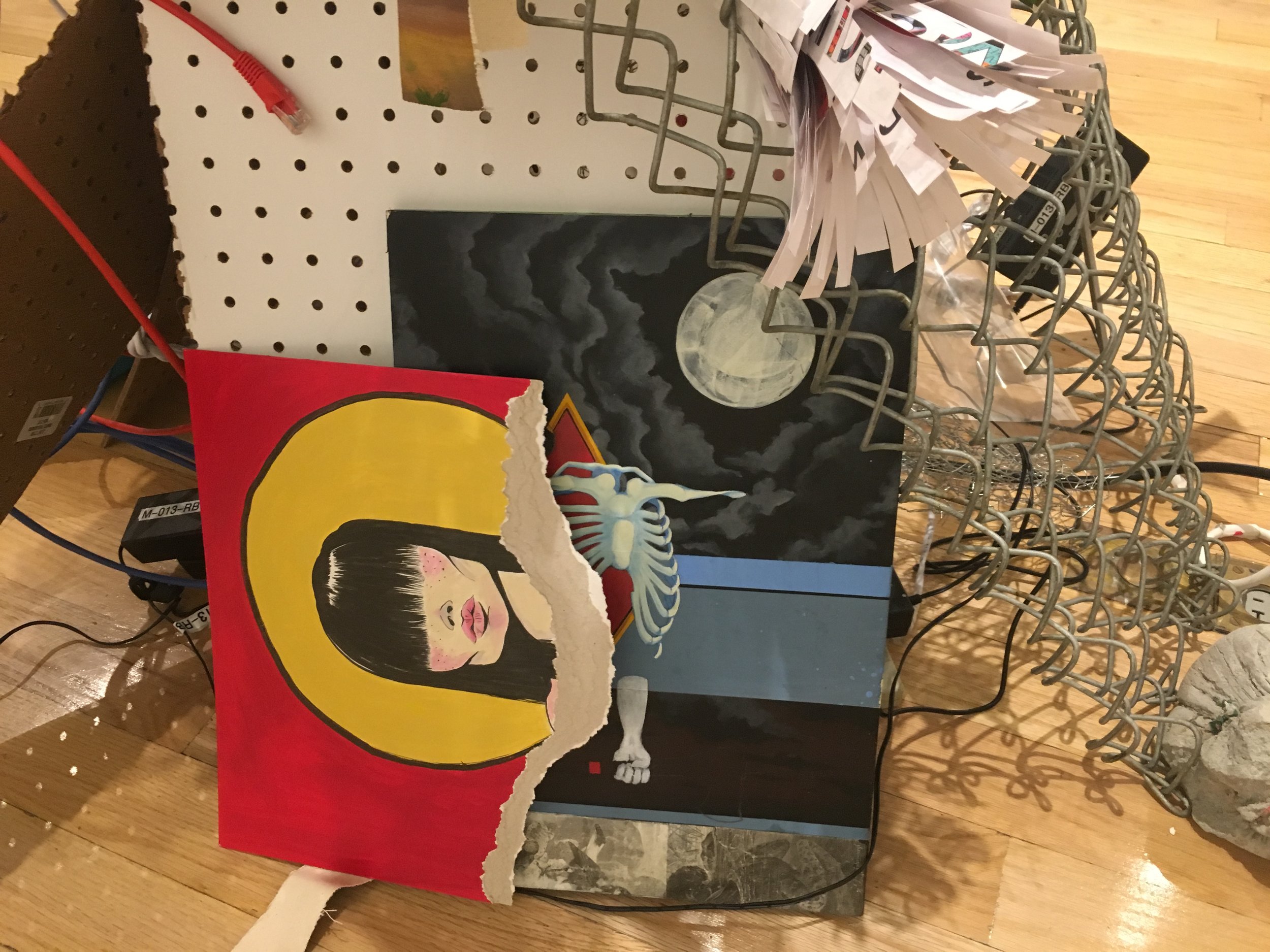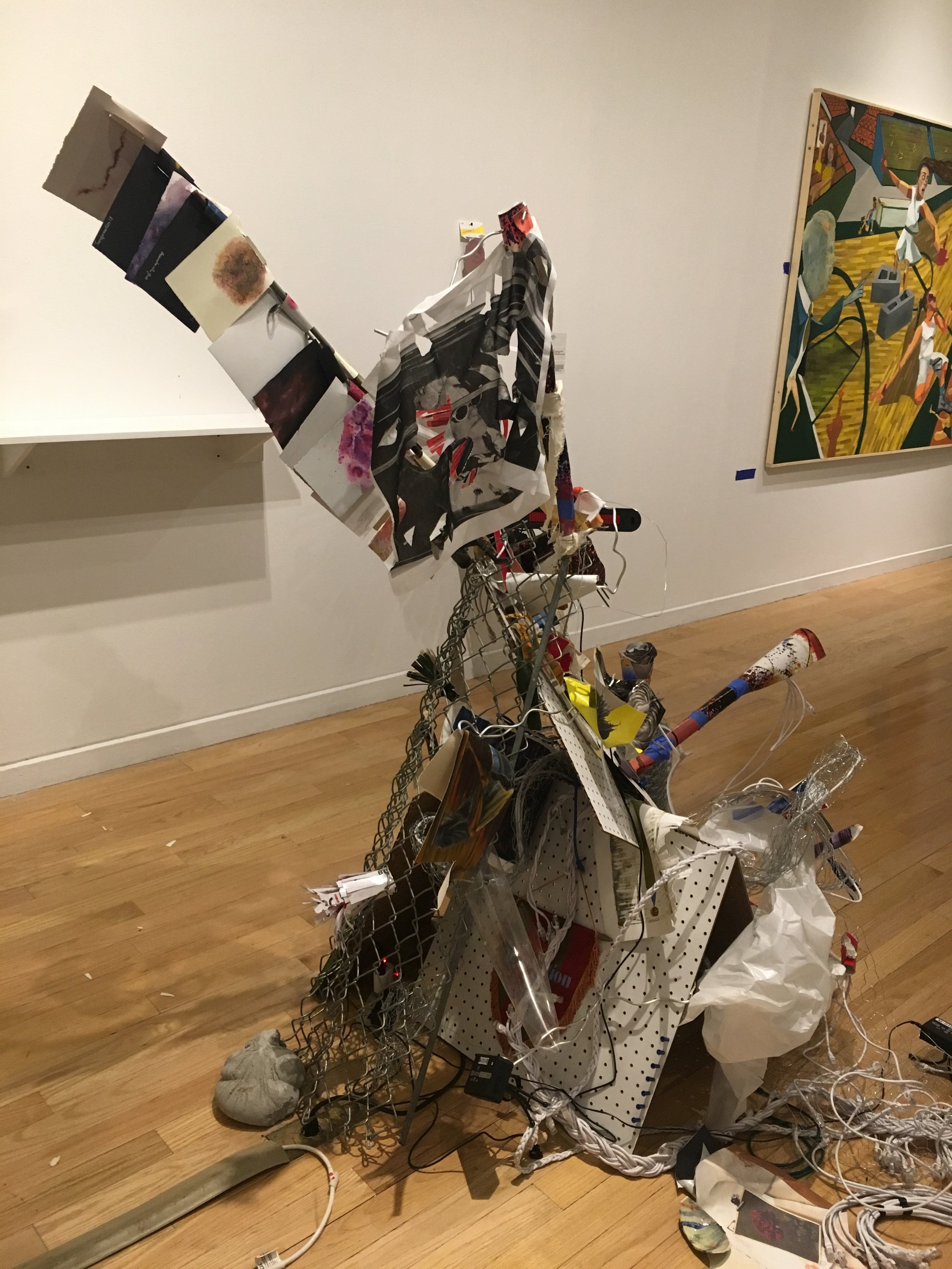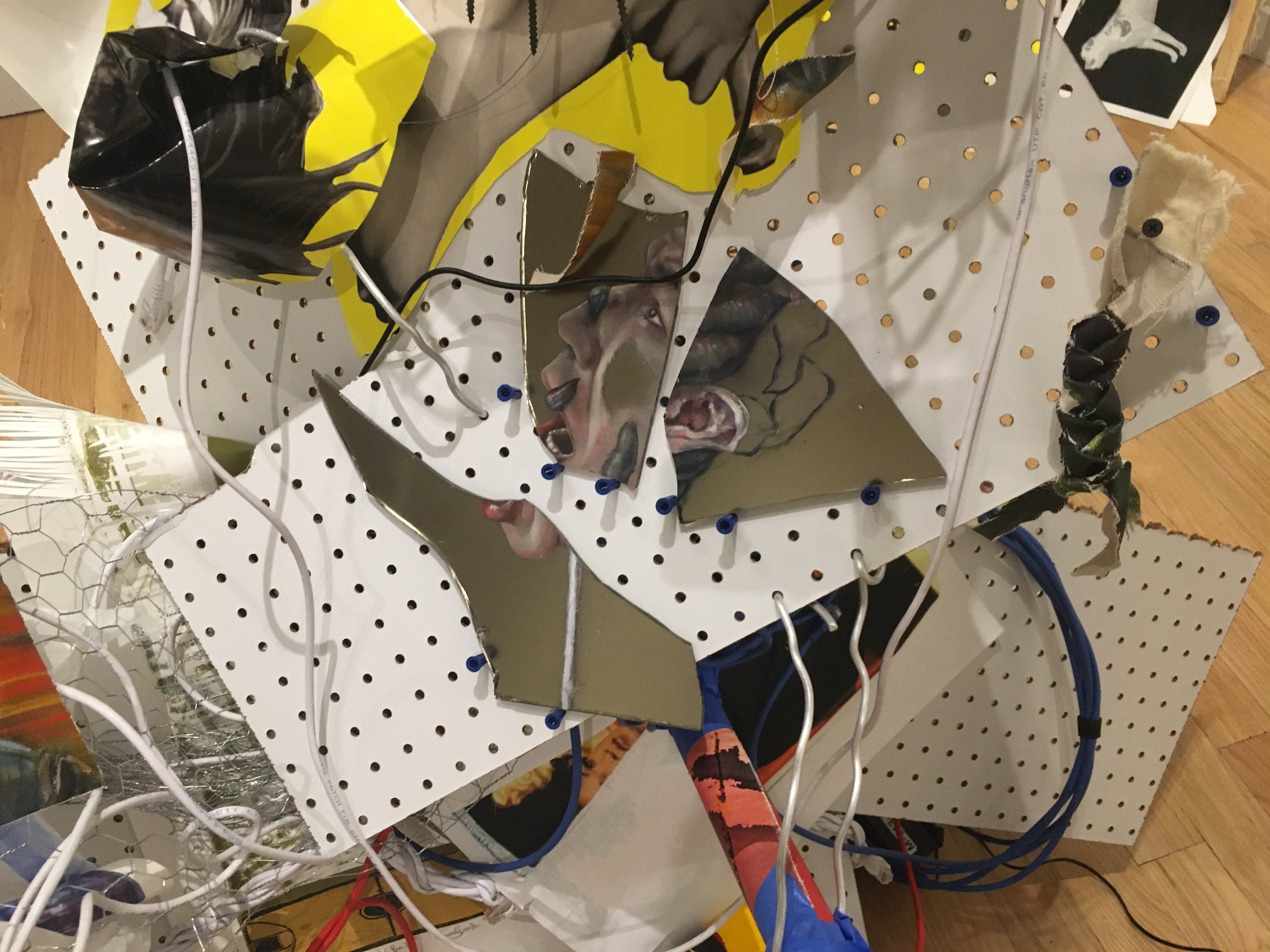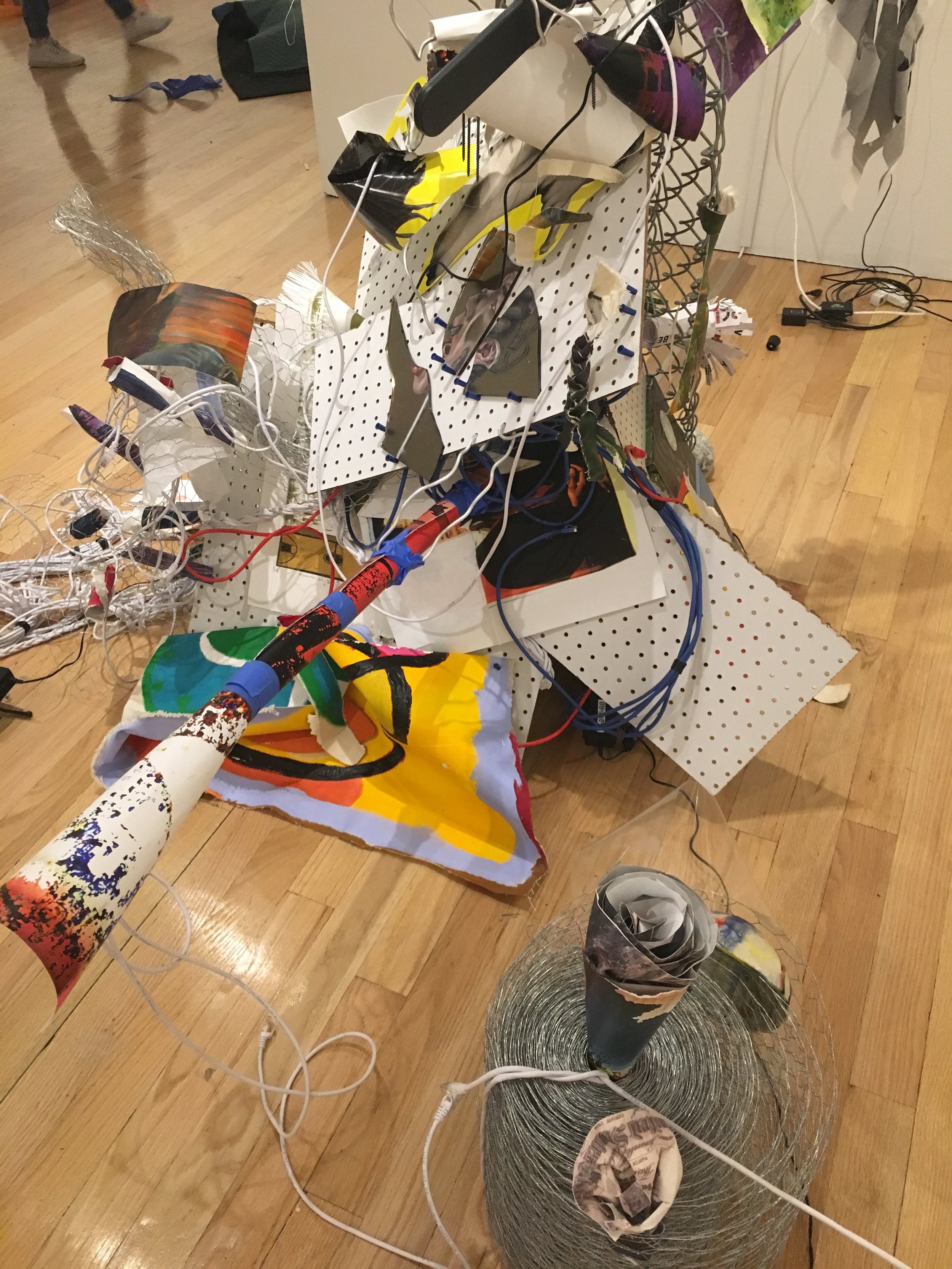Did you get my email?
Credit D'etat is a performance. Sending email is a performance. Everything is performance, and that is also the boilerplate response when you’re asked if something is performance. To paraphrase Richard Schechner, performance can be separated into ceremonies, shamanism, performance in everyday life, play, art-making, ritualization. The multi-directional nature of performance is complex and makes it hard to lock down into one definition. However, I would add from Soyini Madison, that co-performative witnessing is important to grasping the true definition. The idea that "we meet others in the counterbalancing pulls of communication and subject formation."
Sending emails to artists and galleries has been a performance that nobody witnessed but my Sp18-VISC-0111-01-Contemporary Art: The Present class, where I spent the majority of class time sending emails to contemporary artists, many of whom we were discussing as I was crafting and sending the emails. However, once the email is received, the artist is given the chance to witness my communication, deleting, replying or ignoring ultimately making the email a mutual encounter.
I'll go a step further and mention that I think emails are even more performative in business settings. This project originated from my experience crafting business emails for various jobs and the hours of tedious mind-numbing edits and considerations of how certain words will be considered when they are read by a client. What I've sent out is a variation of a cold marketing email template. In business, emails must be written "formally" with the correct tone and format to be considered as respectable and professional. The change in the way these emails are crafted from the everyday way of speaking and doing is a societal construct and one in which I wished to reveal. I worked inside my societal role of student and used my "student" identity within the institution of my university as a purposeful choice. There is social currency in being a student, whether people think they can help you to learn more about the world or think you cannot afford things without a real income, or something else…but when you mention you are a student often times the guard comes down.
So using the proper frame of a business email and the institutional protection of my student identity and a well known domain name of the university, I begin to play. Not "Play with it," but rather "play" in the most joyous form. "Playing with it" has become a graphic design, or "creative," phrase that has nothing to do with play. It connotes practicing or debugging. The "play" I mean is in its most expressive way of communicating. The play that we experience as children when we dare each other to imagine together. In this way, I am asking artists to join me in play, as I use my imagination to turn myself into an artist that sees no value in the labor, expertise, or intellectual thought required to create contemporary art. My play is a satire of the real economy of art, where precious items are developed and assembled by skilled labor and yet there is no credit given. Even lesser-known artists send their works out for printing or such types of assembly, without crediting the labor. I have chosen to not credit the artists for the work they send me. The work is credited to me only according to the email. This lack of credit eliminates the work and skill the artists I have emailed have done to create their art-works.
Except, I contradict myself immediately by crediting the artists by including their names in the title of the work. The subtext of this contradiction is where I am asking artists to play with me. I am perpetrating the issue of failing to provide credit, but I am also providing credit at the same time. If they sign up, they are signing my petition…they are joining the cause! The play here is intentional to provide a context for my authenticity. I'm not just stealing people's work and I have no interest in forging works or making it appear as though people have participated. Instead, through the contradiction, I am creating a game that artists can choose to play or not play.
Certainly this project is about art's commodity status. I know I'm not the first artist to join in this conversation. This performance to me is in direct conversation with the Erased de Kooning Drawing, by Robert Rauschenberg. I have simply scaled up to include more artists. Though Rauschenberg maintains that his performance was about creating artwork from erasure, another interpretation of the work is that Rauschenberg destroyed de Kooning's work. Which version of the drawing is more valuable? (Diego Leclery clears this up:
"Lastly, in answer to your question about the relative value of the deKooning and the Rauschenberg, that should be easy enough to figure out. The Rauschenberg was part of a gift of 23 works that was valued at 40 million in 1998. Let's say it was the star of the donation (which included a Duchamp fountain—not valued in the millions in 1998—and a red Liz Taylor by Warhol) and it was 2.5 million. The best deKooning drawing from the same time sold in 2002 was worth 2-4 million, and another one sold in 2015 for 6 million. I'd say it's probably a tie."
-Diego Leclery, in email exchange
Of course, my OTHER question is this: Should de Kooning have gotten credit on that piece? I would consider the erased drawing to be performance documentation, and in the same vein I consider the eventual mixed-media collages from my own project to be performance documentation. But it will also be my own conceptual sculptural work. It's both. And yet the artists who put work in “built” their contributions and deserve credit. The same way that de Kooning created the original drawing.
Though the sculpture is displayed in a "thesis show" and not an ideal "sales driven site" as would make it more conceptually relevant, I would argue that thesis shows are points of sale for many artists and also marketing sites where artists can network with gallerists and curators who may eventually hire them or sell their art.
The actual assembly of the mixed media sculpture was completed by a group of assistants I found who worked for a free lunch. They are all very skilled artists and put together my vision of the sculpture. Their credit is in a video playing in front of the sculpture. The sculptures incorporate a mix of media, including prints, paintings, videos, sound, ceramics, and sculpture, all collaged together. This is what is meant by mixed-media collage.
Next to the sculpture, a video of the assembly played, showing the hidden labor, and a book with the email documentation will display the hidden correspondence and reveal the source of the materials. Both the physical labor of the assembly and the conceptual labor are represented in the installation. I've chosen to frame the video as an Art 21 video to carry the character of "well established white male artist" into a context people generally see them. This also was a way of allowing the character to have more a voice.
There is an arbitrary limit of credit, I think that a line needs to be assigned for contemporary art. Even if it is not as robust as a feature film, theater, business, video games, or academic publications, credit is a commodity in a gig economy.
Previous thoughts on this performance:
For as socially responsible as artists claim to be, all the social commentary and socially engaged, socially aware art that is shown at social gatherings, it's amazing that something as socially responsible as giving a skilled laborer credit can create such anti-social behavior.
This is a performance. It comes from a sincere intent to critique the status quo regarding credit given in fine art. I'll admit now that I am perpetrating an elaborate ruse. Just like Rauschenberg needed de Kooning, I need other artists' artwork because using my own art would not make me part of the problem. If I become part of the problem during this performance, if I warrant criticism, that is ideal. This performance is meant as a lightning rod of critique. I don't believe every artists is a problem. I am not trying to disrespect anyone's artwork.
Here are some other thoughts I have about this performance:
Credit is a commodity, it's valuable. People who have skills, who hustle, network, elbow, shove their foots into doorways to keep the deal alive...they rely on credit for the next gig. People who support themselves in the gig economy rely on credit.
This project isn't about art institutions, it's about artists screwing other artists.
This has nothing to do with critiquing how art gets made. It's about how art gets shown.
This has nothing to do with art commerce. It has to do with the labor that produces the product.
Also...this project has everything to do with art institutions, critiquing how art gets made and art commerce...
ART is a lie. But generating that art should not be. We need to make the industry of art an honest one.
Professional artists use the same professional skilled workers to do things like paint "just the eyes of the mural because she's really good at painting eyes." It's not out of the realm of possibility that the muralist could be accepting credit for the eyes, is it?
Even in art schools, students are urged to send projects "out" in order to finish certain processes on time, then they are given critiques on their work on the piece. That's the culture that artists are exposed to and indoctrinated to believe at an early age.
I'm not disillusioned with the fact that artists are visionaries, geniuses, brilliant and dazzling sparks of energy that thrill the world with their magical output of experiences and objects that make us truly question the way we look at the world.... ..... ....I'm just saying I don't see why why artists cannot still be visionaries and geniuses if they admit to, and everyone knows that, they didn't weld every inch of the sculpture? Not everyone is good at everything.
If you're a collector...this point is for you. Wouldn't you think a piece was worth more if you knew that a "young Jeff Koons" worked on it before he made it? Even if it was made by someone else? You're losing out on a lot of those thanks to the current credit structure in the industry of fine art production.
Most artists don't make a living making art, at least not off their own art. A lot of artists make a living making art for other artists. Very few artists are willing to put full credits of everyone in the studio who worked on a piece or answered phones for the artist while that piece was being assembled when showing within the institution.
If you need a reference on why credit is important, please ask every other art form (theater, film, dance..etc,) the academic world, and the business world.
ORIGINAL EMAIL:
Can I Use Your Fine Art In My Collage?
I'm requisitioning fine art from artists to use in my collage. No credit will go to the artist, only I will be credited. Instead your name will be used in the Title of the work.
Any size or type of work will be fine, I'll improvise. Unfortunately, I cannot pay you for a work (that's against the unspoken rules of collage,) but I am able to pay for shipping if needed.
Though personally I am a huge believer in the spirit of collaboration, the art market is not, so I need to look out for my own reputation. I'd really like to keep your involvement a mystery, so if you could not tell a lot of people that you are giving me something that would be awesome. I, in return, will not tell a lot of people of your involvement either. We can write something up legally if that's necessary, but I hope it's not.
Please let me know if you are interested, it would thrill me to no end to work with any fine art for this project. I've basically been using regular old ready-mades and found-objects, very boring stuff. I would love to work with some real contemporary pieces.

